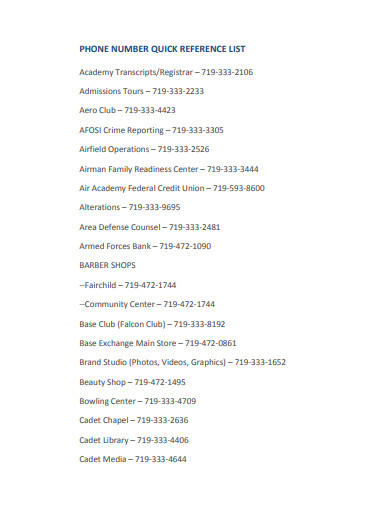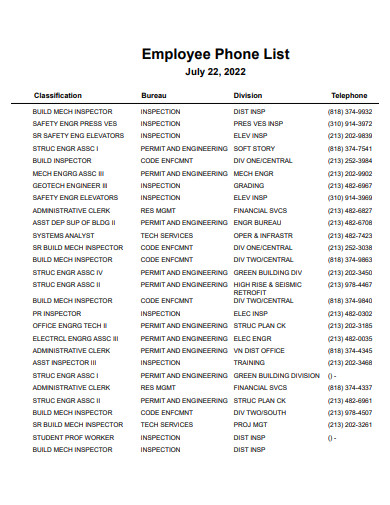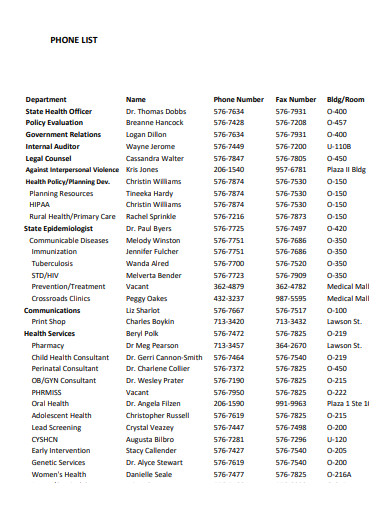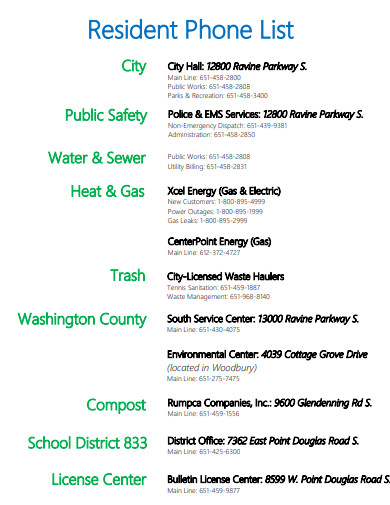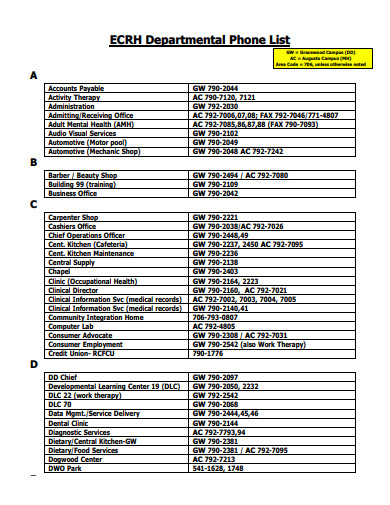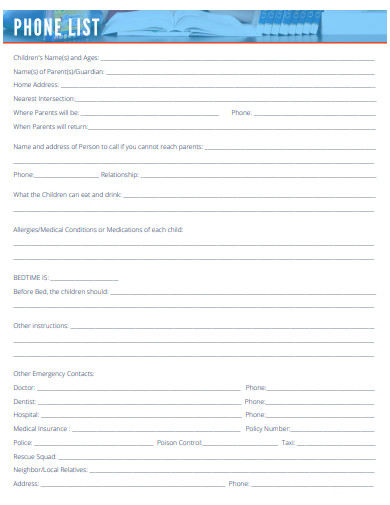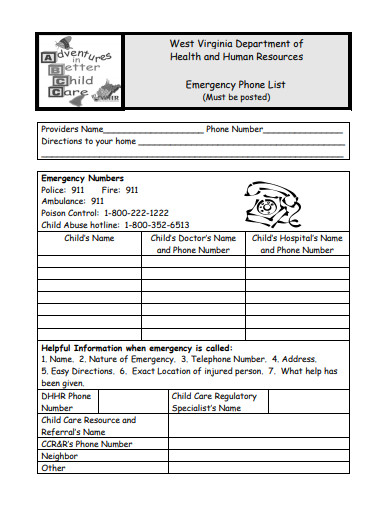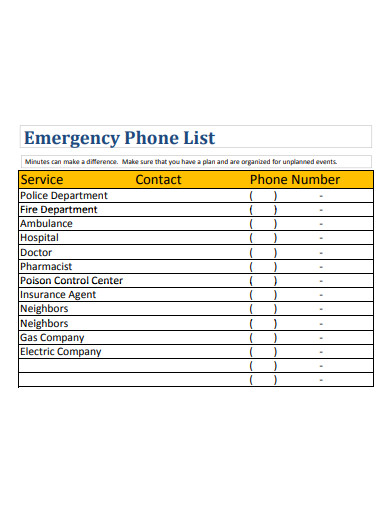One of the most important uses of a phone list is to have a resource tracking of important contacts. This can include personal contacts, such as friends and family members, as well as professional contacts, such as clients and colleagues. A phone list makes it easy to find the right person for an on call or sample phone message when you need to, whether it’s to touch base with a friend or to follow up with an agency client.
10+ Phone List Samples
1. Phone List
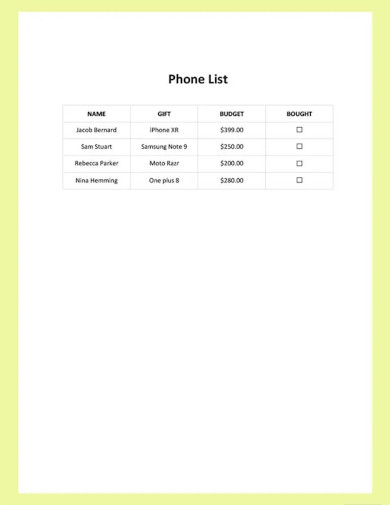
2. Phone Number Quick Reference List
3. Employee Phone List
4. Librarries Phone Number List
5. Sample Phone List
6. Resident Phone List
7. Departmental Phone List
8. Agency Phone List
9. Simple Phone List
10. Emergency Phone List
11. Sample Emergency Phone List
What is Phone List?
A phone list is a compilation of telephone numbers organized in a specific order, usually alphabetically or by category. The purpose of a phone list is to provide a quick reference samples for individuals or organizations to easily access contact information. This can be in the form of a paper-based list, an electronic spreadsheet, or a database.
How To Make a Phone List?
Another benefit of a phone list is that it can help keep information organized and up-to-date. It’s important to regularly review and update your phone list to ensure that all of the contact information is current. This can be done manually or through the use of automated tools that can scan and update contact information from various sources. Here are the steps to make a phone list:
Step 1- Gather Contact Information
Start by collecting the names, phone numbers, and other relevant information of the individuals or non-profit organizations you want to include in your phone list.
Step 2- Choose a Format
Decide whether you want to create a paper-based list, an electronic spreadsheet, or a database. Choose a format that works best for you and the way you prefer to access and use your phone list.
Step 3- Input and Organize Information
Enter the contact information into your chosen format. If using a paper-based list or spreadsheet, be sure to clearly label each column with the appropriate information, such as name, phone number, email, etc. Decide on the order in which you want to organize the information in your phone list. You can organize it alphabetically by last name or first name, by category.
Step 4- Review and Make a Back-up
Regularly review your phone list to ensure that all of the information is up-to-date. Update any changes, such as new phone numbers or email addresses, and delete any contacts that are no longer needed. If using an electronic format, be sure to make a backup copy of your phone list in case your device is lost, stolen, or damaged.
Can a phone list be shared with others?
Yes, a phone list can be shared with others, depending on your preference and the type of phone list you have created. For example, a paper-based list can be physically shared with others, while an electronic spreadsheet or database can be shared via email writing or through a cloud-based service.
How often should a phone list be updated?
It’s a good idea to regularly review and update your phone list to ensure that all of the information is up-to-date. This can be done on a monthly or quarterly basis, or whenever you receive new information.
What are the benefits of having a phone list?
Having a phone list provides easy access to important contact information, helps keep information organized and up-to-date, facilitates communication and collaboration in the workplace, and can be used as a form of emergency operation contact information.
Finally, phone lists can be used as a form of emergency contact information. For example, schools and daycare preschool often maintain phone lists with the names and phone numbers of parents and guardians so that they can quickly reach out in case of an emergency. In conclusion, phone lists are an essential tool for individuals and organizations to stay connected and organized. Whether for personal log or professional use, a well-maintained phone list can help ensure that you always have the information you need at your fingertips.
Related Posts
FREE 9+ Sample Phone Message Templates in PDF MS Word ...
FREE 6+ Wedding Guest List Samples in PDF MS Word
FREE 8+ Sample Address Lists in PDF
FREE 8+ Guest List Samples in PDF MS Word | Excel
FREE 11+ Packing List Samples in MS Word PDF
FREE 7+ Sample Wedding Guest Lists in PDF MS Word | Excel
FREE 6+ Sample Address Book in PDF MS Word
FREE 8+ Contact Log Samples & Templates in PDF MS Word
FREE 5+ Sample Printable Phone Log Templates in PDF MS Word
FREE 9+ Sample Address Book in PDF MS Word | PSD
FREE 18+ Sample Price List Templates in PDF MS Word | Excel
FREE 10+ Tracking Log Samples in PDF MS Word
FREE 8+ Sample Fax Cover in PDF
FREE 10+ Meeting Attendee List Samples in PDF MS Word
FREE 8+ Sample Contact Sheet Templates in Google Docs Google ...

